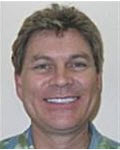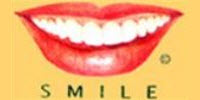Call (925) 820-6623
Use of Laughing Gas (Nitrous Oxide and Oxygen) During Sedation Dentistry Procedures
The most commonly employed technique used in conscious sedation dentistry is inhalation sedation with nitrous oxide and oxygen (N20-02) or "laughing gas". It is estimated that approximately 35% of U.S. dentists use this technique to relieve dental anxiety.
The goal sought when laughing gas is used is to eliminate dental anxiety, making the patient more comfortable while the sedation dentist is able to more effectively complete the planned dental care procedure while the patient is sedated. Consult with your dentist to find out if this procedure right for you.
A small rubber inhaler will be placed over the patient's nose and adjusted so that the patient is comfortable. At this time, the patient will be breathing 100% oxygen.
Some patients at their first laughing gas visit will feel that they are not getting enough "air." The patient should tell the sedation dentist and he or she will provide them with even more oxygen to breathe.
Once the patient is comfortable breathing oxygen, the dentist gradually will introduce nitrous oxide. Over the next three to five minutes, the patient will be asked, "What are you feeling?" as the amount of nitrous oxide is slowly increased.
The signs and symptoms that most patients experience when receiving laughing gas include an initial feeling of lightheadedness, which gradually leads to an all-over feeling of warmth. Many persons mention a comfortable "vibrating" or "humming" sensation. It is common to feel one's fingertips and hands become "numb."
This same sensation may develop in the mouth - a benefit to the sedation dentist (and patient) during the dental care treatment. Some patients will mention that their arms and legs feel "very light." Interestingly, other patients will say that their arms and legs feel "so heavy I can't even move them."
If either of these occurs to the patient, it is perfectly normal. The individual might notice that they are perspiring a little, too. This is a normal effect of nitrous oxide and oxygen dentistry.
The sedation dentist will talk with the patient throughout the dental care procedure and the individual will be able to respond without any problem. This is a major advantage, and a safety feature, of conscious sedation using laughing gas.
If, at any time during the procedure, the patient feels that they are getting too much nitrous oxide or if they begin to feel uncomfortable, they should tell the dentist immediately and within seconds the dentist can adjust the flow of gases, and the patient will feel more comfortable again.
At the conclusion of the sedation dentistry treatment, the patient will once again receive 100% oxygen (for a minimum of three to five minutes). At the end of this time, the person should feel absolutely back to normal. If they still feel even a little bit sedated, the dentist should give the patient oxygen for a few more minutes.
Most dentists permit the fully-recovered laughing gas patient to leave the dental office unescorted and to resume their normal activities. In some situations where a patient recovers more slowly, they might be required to have an escort (friend or relative) drive them home.
Laughing gas inhalation sedation is highly effective in the management of mild to moderate levels of dental anxiety. It also is an excellent technique in persons who are extreme gaggers; laughing gas usually eliminates or minimizes gagging in most patients.
Finally, laughing gas is highly recommended for apprehensive patients who have medical problems such as angina pectoris, persons who have had a heart attack, or persons with high blood pressure, asthma or epilepsy.
Inhalation sedation dentistry should not be used with persons who are claustrophobic or with persons who are unable to breathe through their nose. Please discuss these with your dentist before treatment using laughing gas begins.
By Stanley F. Malamed, DDS
Call for an appointment:
(925) 820-6623
Make an Appointment
Don't Forget to Floss!
Clean between teeth daily with floss or an interdental cleaner. Decay-causing bacteria can hid between teeth where toothbrush bristles can't reach. Flossing helps remove plaque and food particles from between teeth and under the gum line.
Visit Our Office Regularly!
Take good care of your smile. Remember to visit the dentist regularly for professional cleanings and oral exams.
Mouthwash Is Important, Too!
Brushing and flossing may not be enough. The ADA now recommends using an antimicrobial mouthwash to reduce plaque and prevent gingivitis.




